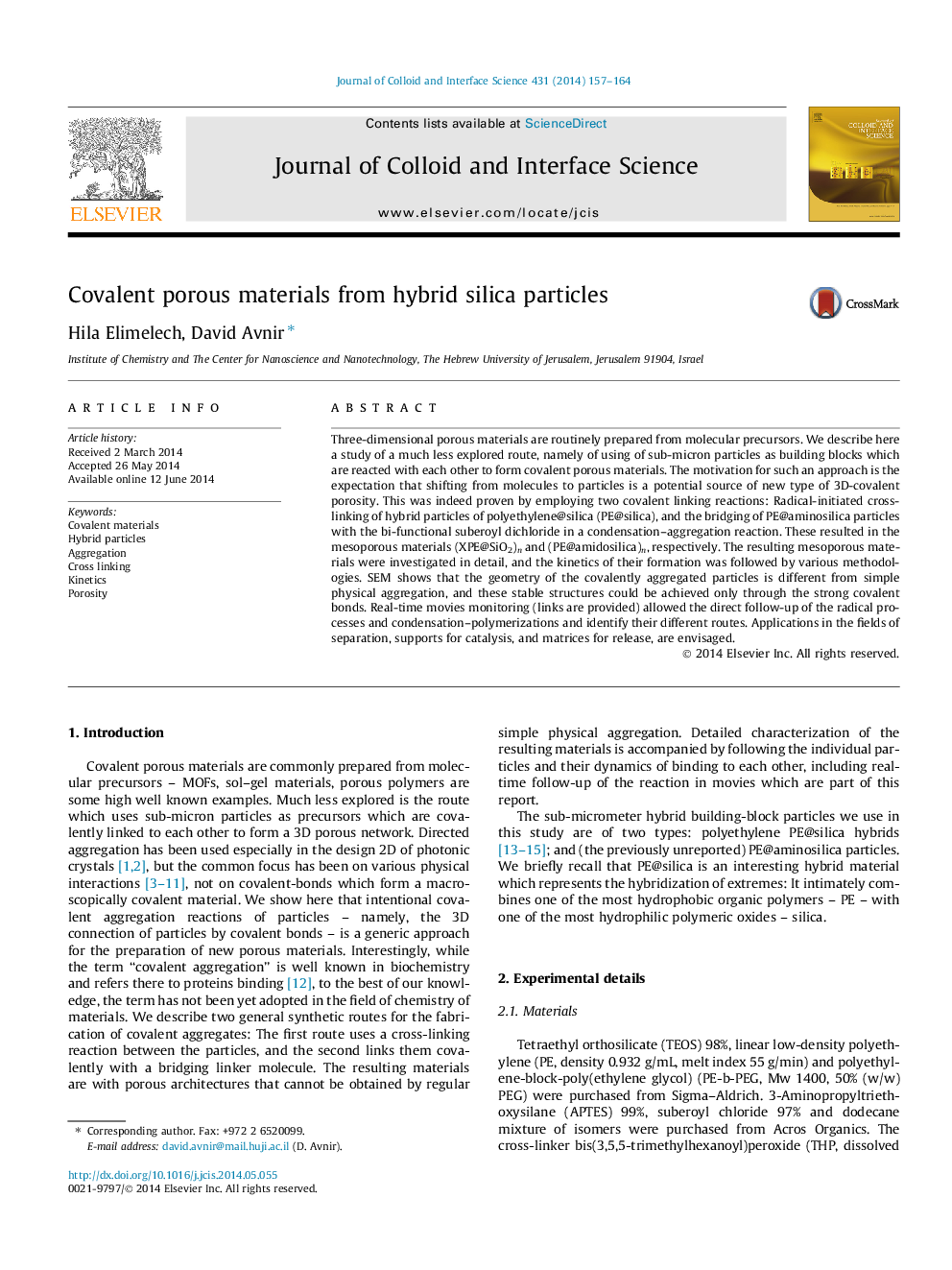| Article ID | Journal | Published Year | Pages | File Type |
|---|---|---|---|---|
| 607085 | Journal of Colloid and Interface Science | 2014 | 8 Pages |
•We emphasize the use of hybrid particles as building blocks for porous materials.•Morphologies unattainable by the classical use of molecular precursors, are obtained.•Movies following the covalent bonding of the particles, are shown.
Three-dimensional porous materials are routinely prepared from molecular precursors. We describe here a study of a much less explored route, namely of using of sub-micron particles as building blocks which are reacted with each other to form covalent porous materials. The motivation for such an approach is the expectation that shifting from molecules to particles is a potential source of new type of 3D-covalent porosity. This was indeed proven by employing two covalent linking reactions: Radical-initiated cross-linking of hybrid particles of polyethylene@silica (PE@silica), and the bridging of PE@aminosilica particles with the bi-functional suberoyl dichloride in a condensation–aggregation reaction. These resulted in the mesoporous materials (XPE@SiO2)n and (PE@amidosilica)n, respectively. The resulting mesoporous materials were investigated in detail, and the kinetics of their formation was followed by various methodologies. SEM shows that the geometry of the covalently aggregated particles is different from simple physical aggregation, and these stable structures could be achieved only through the strong covalent bonds. Real-time movies monitoring (links are provided) allowed the direct follow-up of the radical processes and condensation–polymerizations and identify their different routes. Applications in the fields of separation, supports for catalysis, and matrices for release, are envisaged.
Graphical abstractFigure optionsDownload full-size imageDownload high-quality image (60 K)Download as PowerPoint slide
